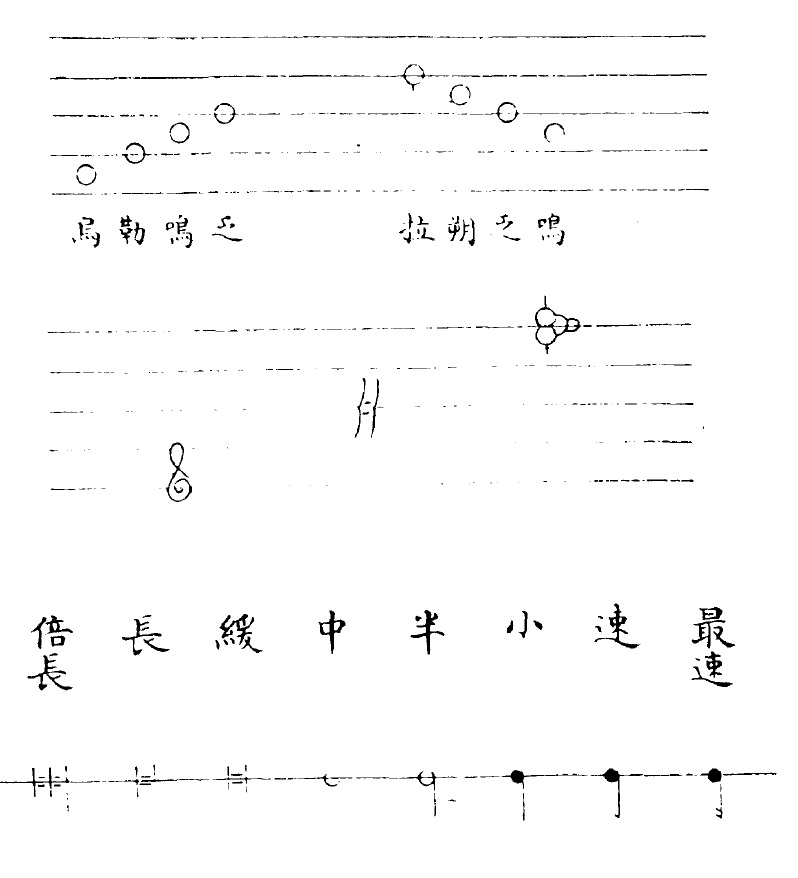(Qinding) Lülü zhengyi (欽定)律呂正義 "(Imperially endorsed) Correct meaning of the pitch-pipes" is a book on music compiled on imperial order during the Kangxi reign-period 康熙 (1662-1722) under the supervision of Prince Yūnlu (Ch. Yunlu 允禄, 1695-1767). The main compilers were He Guozong 何國宗 (d. 1767) and Mei Gucheng 梅瑴成 (1681-1746). The book was part of a tripartite project on astronomy, mathematics, and music begun in 1713 and finished in 1722l. This collection called Lüli yuanyuan 律曆淵源 included also the books Lixiang kaocheng 曆象考成, and Shuli jingyun 數理精蘊. The three books were printed by the imperial printing shop in 1724.
The Lülü zhengyi with a length of 5 juan is divided into three chapters, the last of which is only 1-juan long. The first chapter (Shangbian 上編: Zhenglü shenyin 正律審音 "Rectifying the pipes and investigating tones") describes how a full musical scale of pipes can be developed from the basic Yellow Bell pipe (huangzhong 黃鐘) by altering the length and diameter of the pipes according to a regular method, with a mutual addition and subtraction of one third of the length (sun yi 損益). The same method is also displayed for string instruments by altering the length of the cord.
The second chapter (Xiabian 下編: Hesheng dingyue 和聲定樂 "Harmonizing sounds and determining music") gives instructions how to produce musical instruments with the correct range of sounds. The text provides illustrations and explains changes over time.
The last chapter (Xubian 續編: Xiejun duqu 協均度曲 "Overall unification in the composition of songs"), talking about the harmony of melodies, is also illustrated. It was compiled by the Jesuits mathematicians Tomás Pereira (1645–1708, Chinese name Xu Risheng 徐日升) and Teodorico Pedrini (1671-1746, Chinese name De Lige 德理格).
 |
Examples for the introduction of Western musical concepts in China, Xubian 續編 part of the Lülü zhengyi 律呂正義, showing for the first time different tones (top), and clefs (middle) in the five-stave system, as well as notes of different length (bottom). The "six signs determining the position" (liu zi ding wei 六字定位) are the solfège Do (niao 鳥), Re (le 勒), Mi (ming 鳴), Fa (fa 乏), So (shuo 朔), and La (la 拉). The example in the middle shows the "three keys clarifying the tune" (san ping ming diao 三品明調) with C, F, and G clef, and the image on the bottom "eight signs recording tone length" (ba xing hao ji yue zhi du 八形號紀樂之度) from "very quick" (zuisu 最速) to double-long (beichang 倍長). |
In spite of its lesser importance in the history of music theory, the Lülü zhengyi is included in the imperial series Siku quanshu 四庫全書 because it was compiled on imperial order. It is also to be found in the descriptive catalogue Chizaotang Siku quanshu huiyao 摛藻堂四庫全書薈要.
It was planned that the Kangxi Emperor write a preface, but he died before it was promulgated, and therefore his successor, the Yongzheng Emperor 雍正帝 (r. 1722-1735), finished the work and had printed the collection.